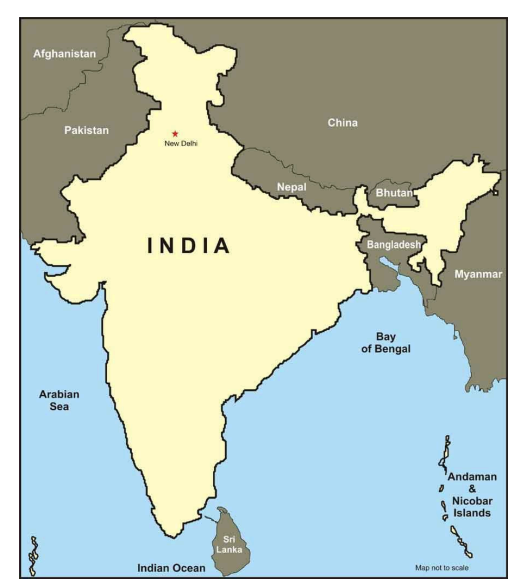
Border area development is a crucial national priority to ensure the security, prosperity, and integration of remote regions. To achieve peaceful and resilient borders, several strategic steps are necessary. First, infrastructure development, such as roads, bridges, and communication networks, should be prioritized to improve connectivity and economic opportunities for border communities. Second, enhancing social services like healthcare, education, and vocational training will uplift the local population, fostering a sense of belonging and reducing grievances. Third, implementing robust security measures, including well-trained border forces and advanced surveillance systems, will deter cross-border threats and illegal activities. Fourth, promoting cross-border trade and cultural exchanges can build trust and mutual understanding between neighboring countries. Lastly, involving local communities in decision-making processes ensures that development plans are tailored to their specific needs and aspirations. By addressing both the economic and security aspects, these resilient steps can create a stable and peaceful environment in border areas, contributing to national unity and growth.
Contents
Introduction:
Border development holds significant importance for nations, particularly in regions like India, where borders often signify not just territorial limits but also cultural, economic, and security dimensions. Understanding the necessity of border development as a national priority is paramount in ensuring sustained progress and security.
Body:

Importance of Border Development as a National Priority:
- Economic Growth: Well-developed borders facilitate trade and commerce, boosting economic growth by enhancing connectivity with neighboring countries.
- Security Enhancement: Strengthening border infrastructure and surveillance capabilities is crucial for ensuring national security, preventing illegal activities like smuggling and infiltration.
- Cultural Exchange: Vibrant border regions serve as1 melting pots of diverse cultures, fostering cross-border exchanges and enriching social cohesion.
- Diplomatic Relations: A well-managed border reflects a nation’s commitment to peaceful coexistence, thereby contributing to favorable diplomatic relations with neighboring countries.
- Strategic Significance: Borders often hold strategic importance, both militarily and geopolitically, necessitating continual development to uphold national interests.
Resilient Steps for Peaceful Borders:
- Bilateral Cooperation: Foster dialogue and collaboration with neighboring countries to address mutual concerns and develop joint strategies for border management.
● The India-Bangladesh Land Border Agreement exemplifies successful bilateral cooperation in resolving long-standing border issues and enhancing regional security. - Infrastructure Development: Invest in modernizing border infrastructure, including roads, bridges, and border posts, to facilitate smooth movement of people and goods.
● The construction of the India-Myanmar-Thailand Trilateral Highway is a notable initiative aimed at improving connectivity and promoting economic integration among the participating countries. - Technological Integration: Deploy advanced surveillance technologies such as drones, sensors, and satellite imagery to enhance border monitoring and detection capabilities.
● The Smart Fence project along the India-Pakistan border utilizes cutting-edge technology to detect and deter infiltration attempts effectively. - Community Engagement: Involve local communities residing along the borders in decision-making processes and development initiatives to ensure their participation and support.
● The Border Area Development Programme (BADP) in India engages local communities in border regions through various socio-economic development schemes, promoting inclusive growth and stability. - Legal Framework: Establish clear legal frameworks and protocols for border management to prevent disputes and misunderstandings.
● The Indo-Bangladesh Land Boundary Agreement (LBA) of 2015 is a landmark example of resolving border disputes through legal mechanisms and promoting peaceful coexistence between the two nations. - Capacity Building: Train border security personnel in modern techniques and equip them with necessary resources to effectively manage border challenges.
● The Border Security Force (BSF) in India conducts regular training programs and skill development initiatives to enhance the capabilities of its personnel in safeguarding the nation’s borders. - Cultural Exchanges: Promote cultural exchanges and people-to-people contacts across borders to build trust and understanding among border communities.
● Initiatives like the India-Pakistan Wagah-Attari border ceremony serve as symbolic gestures of goodwill and foster people-to-people interactions, contributing to peace-building efforts. - Conflict Resolution Mechanisms: Develop mechanisms for peaceful resolution of border disputes through diplomatic channels, arbitration, or international mediation.
● The India-China Border Peace and Tranquility Agreement of 1993 established protocols for managing border incidents and maintaining peace and stability along the Line of Actual Control (LAC).
Conclusion:
By prioritizing border development and adopting resilient measures, nations like India can not only safeguard their territorial integrity but also foster harmonious relations with neighboring countries, paving the way for shared prosperity and security in the future.
In case you still have your doubts, contact us on 9811333901.
For UPSC Prelims Resources, Click here
For Daily Updates and Study Material:
Join our Telegram Channel – Edukemy for IAS
- 1. Learn through Videos – here
- 2. Be Exam Ready by Practicing Daily MCQs – here
- 3. Daily Newsletter – Get all your Current Affairs Covered – here
- 4. Mains Answer Writing Practice – here

